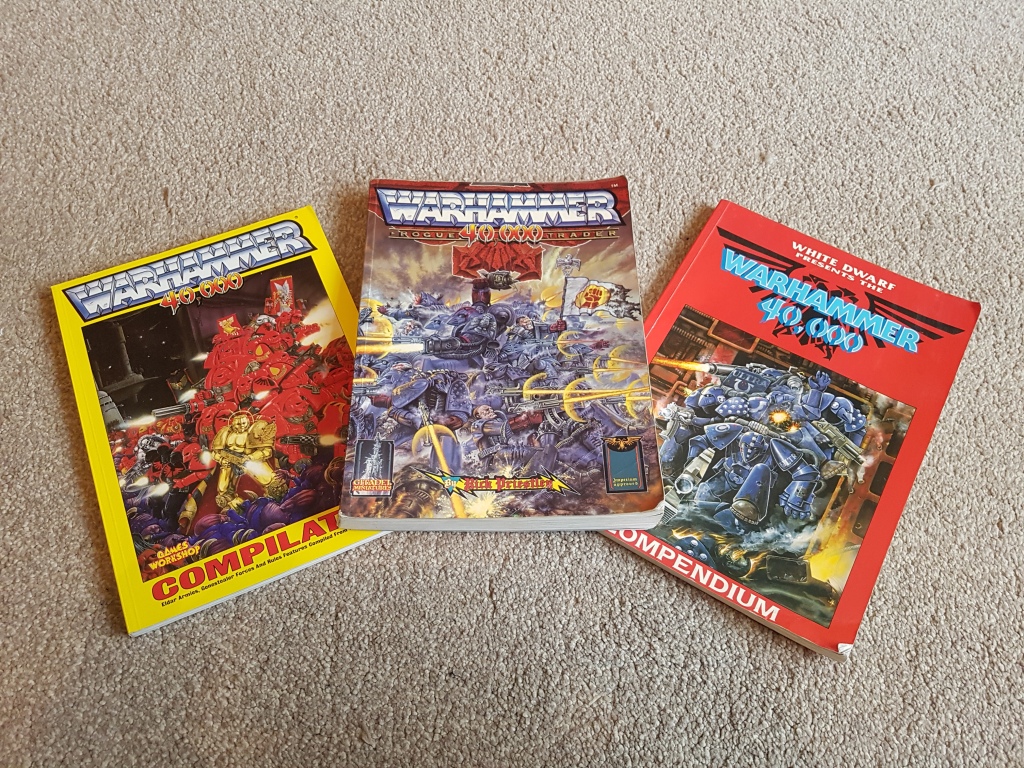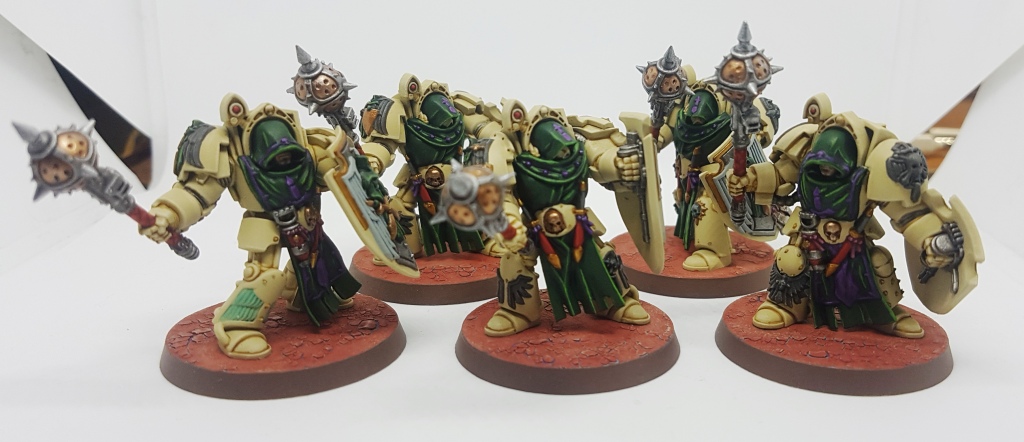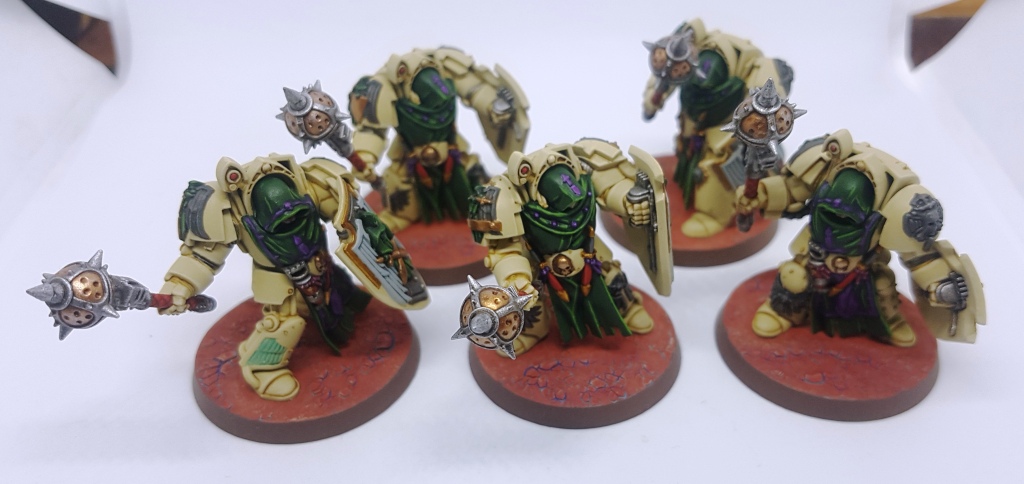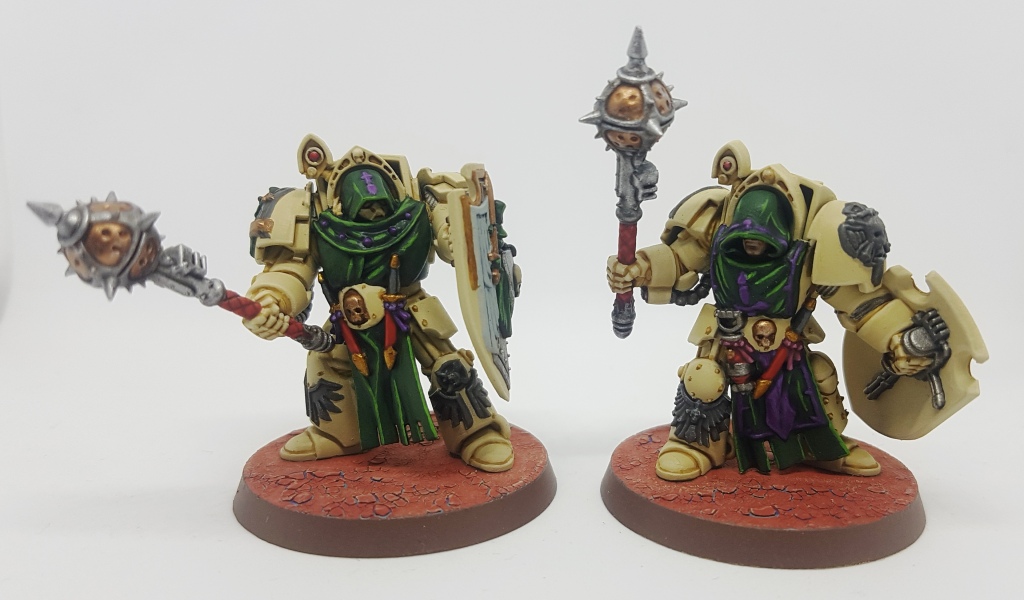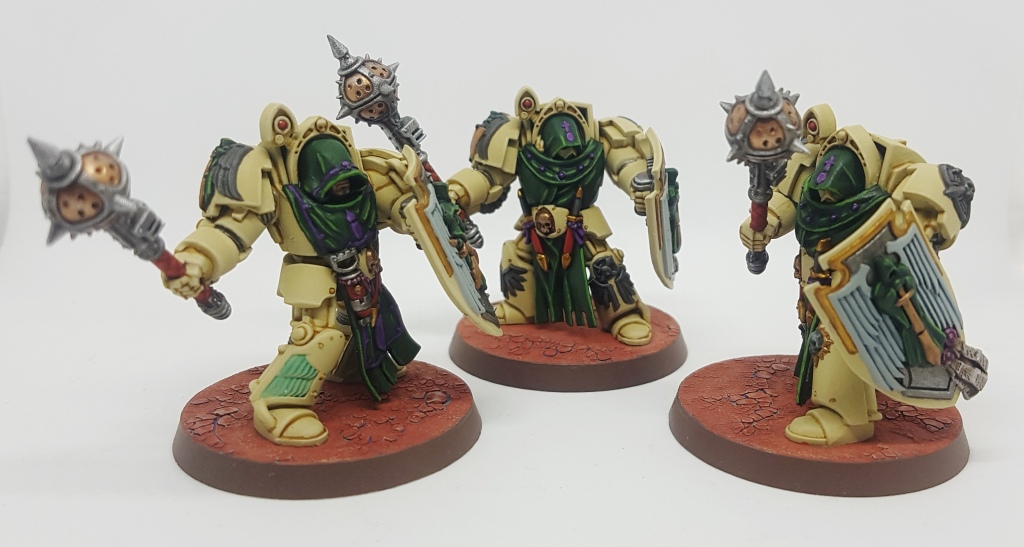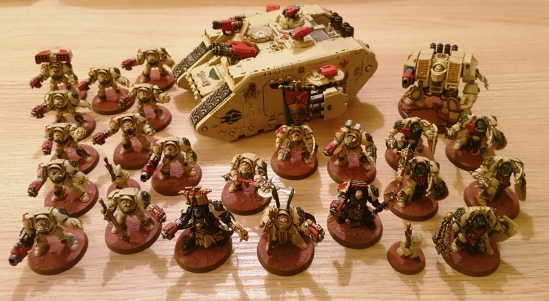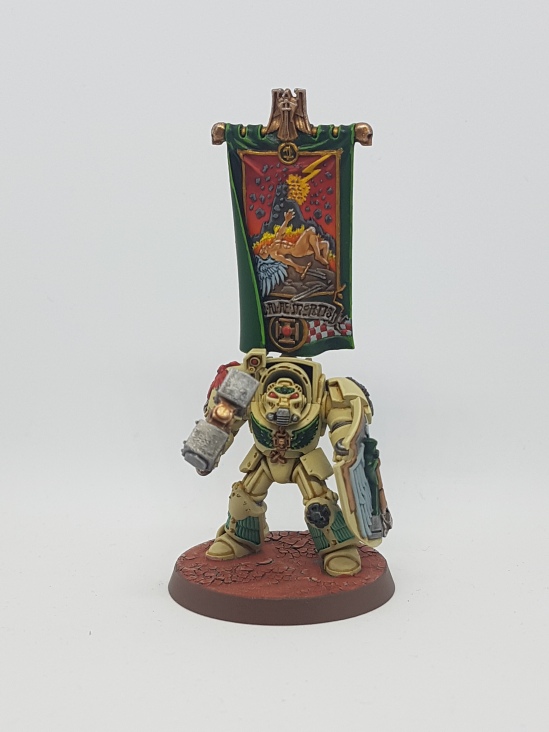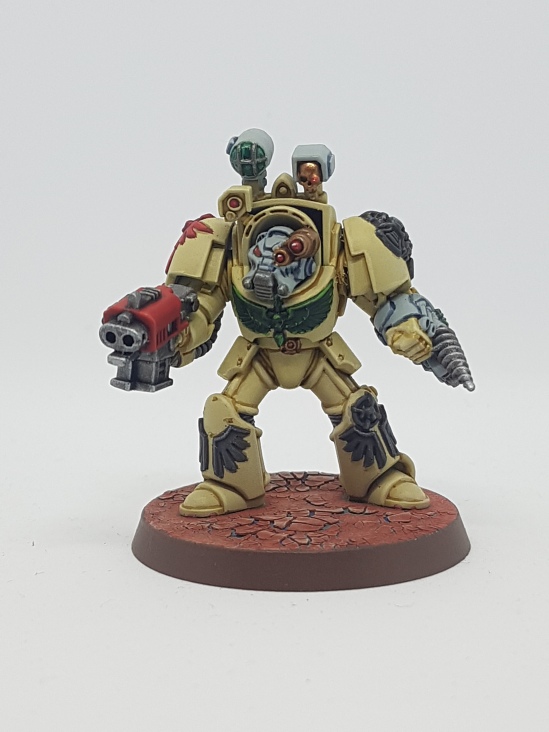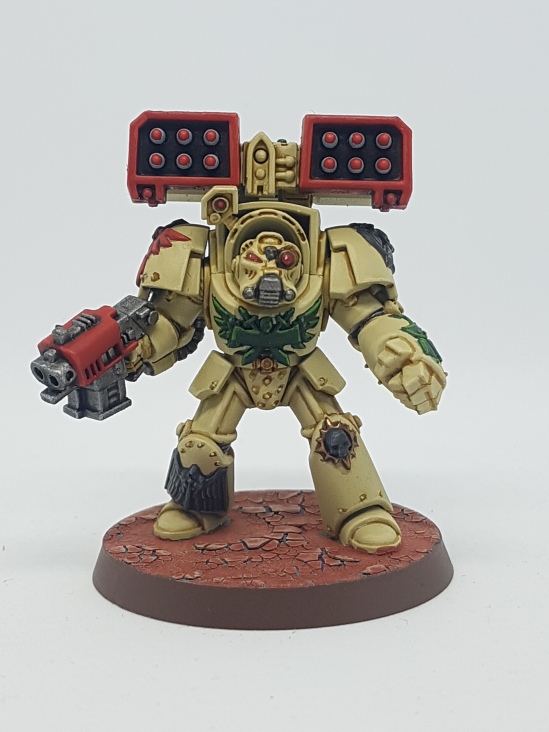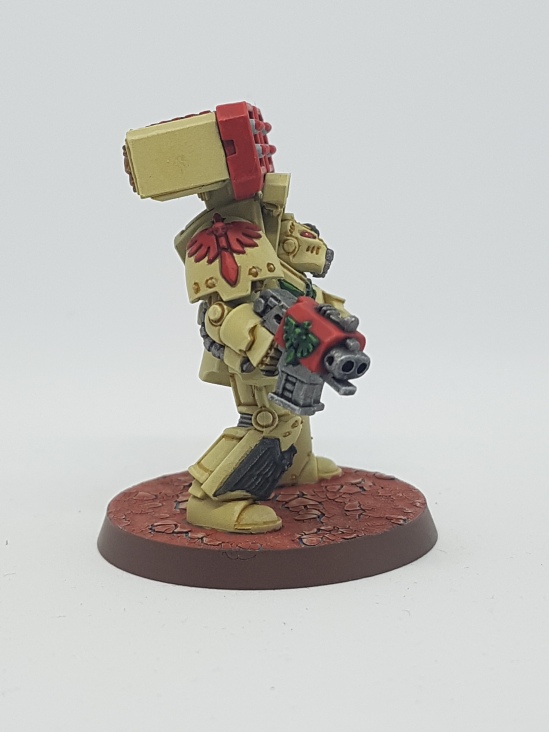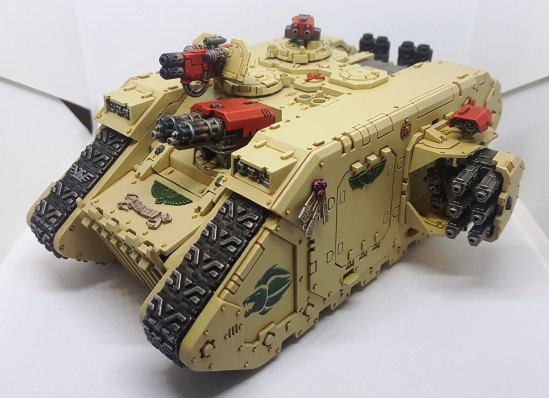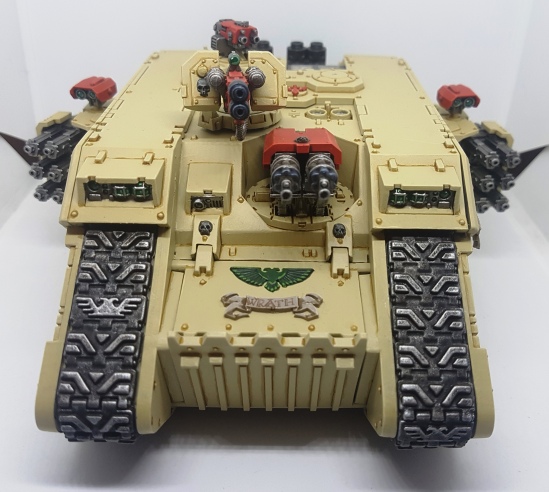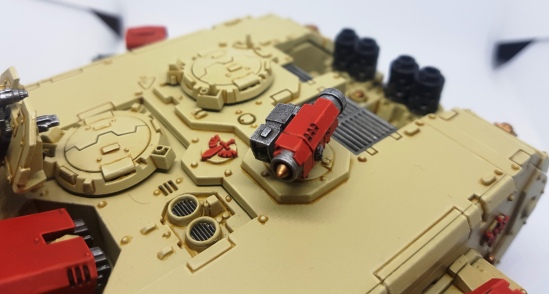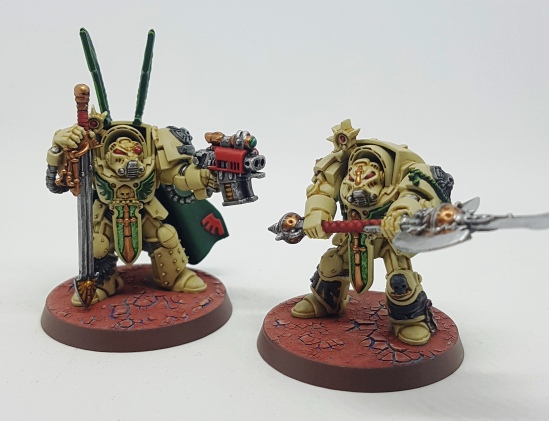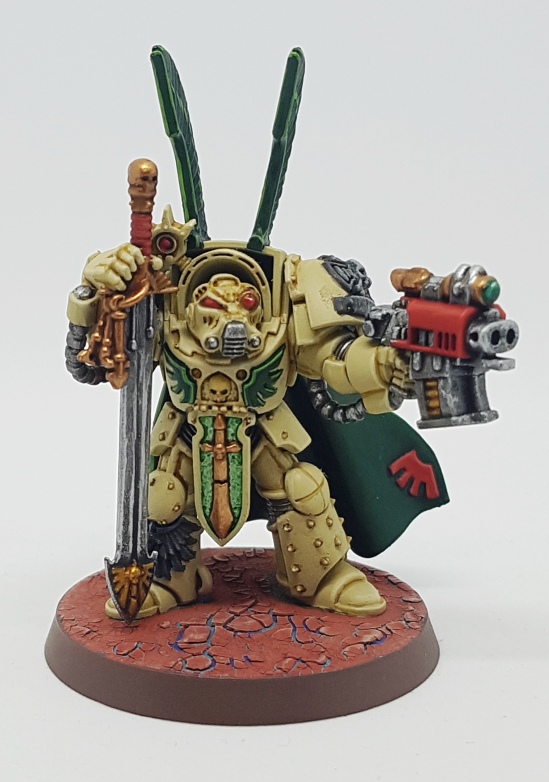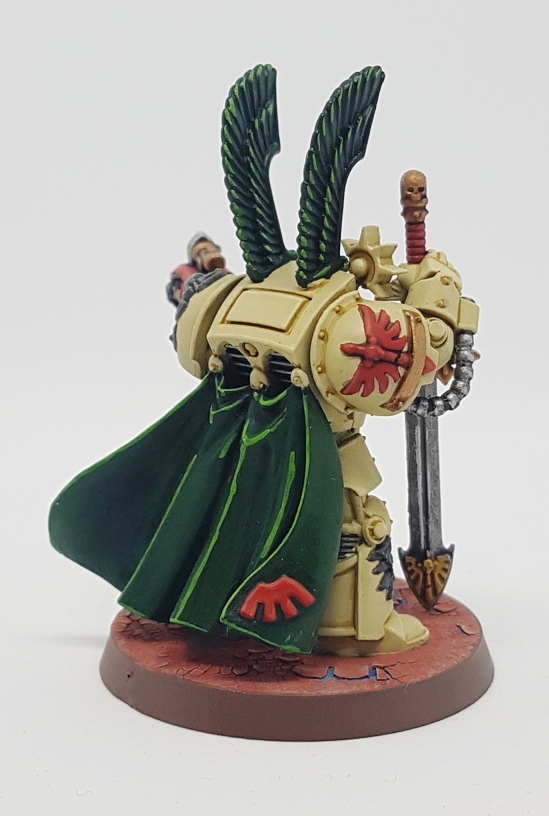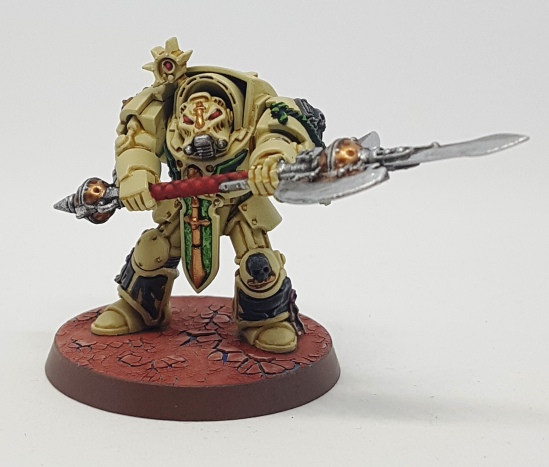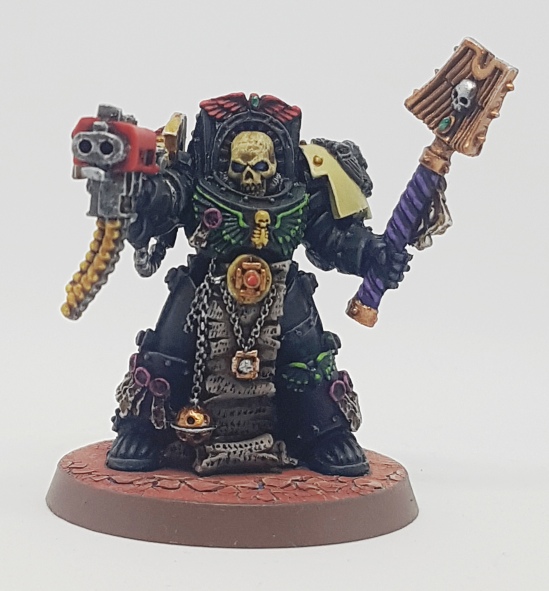
This gent arrived in the post a little while ago. I had it back when 1st edition was the only edition, but sold it when I got 2nd. It’s great to have it back in my life! It’s really taken me back to the early 90s!
Published in 1991, making this 30 years old, it’s in incredible condition. And I managed to get it for a third of the price they usually go for! Feeling smug.
Firstly, there’s the cover – a bright yellow background and the vibrant red of the Blood Angels, who are heroically cutting down hordes of genestealers. A hint of what’s to be found inside.
Much like the Warhammer Compendium (published two years earlier), the Compilation is basically just a collection of White Dwarf articles with new rules, army lists and background for various factions. This one focuses on Space Marines, Grey Knights and other Terminators, Imperial Guard, Eldar and Genestealers.
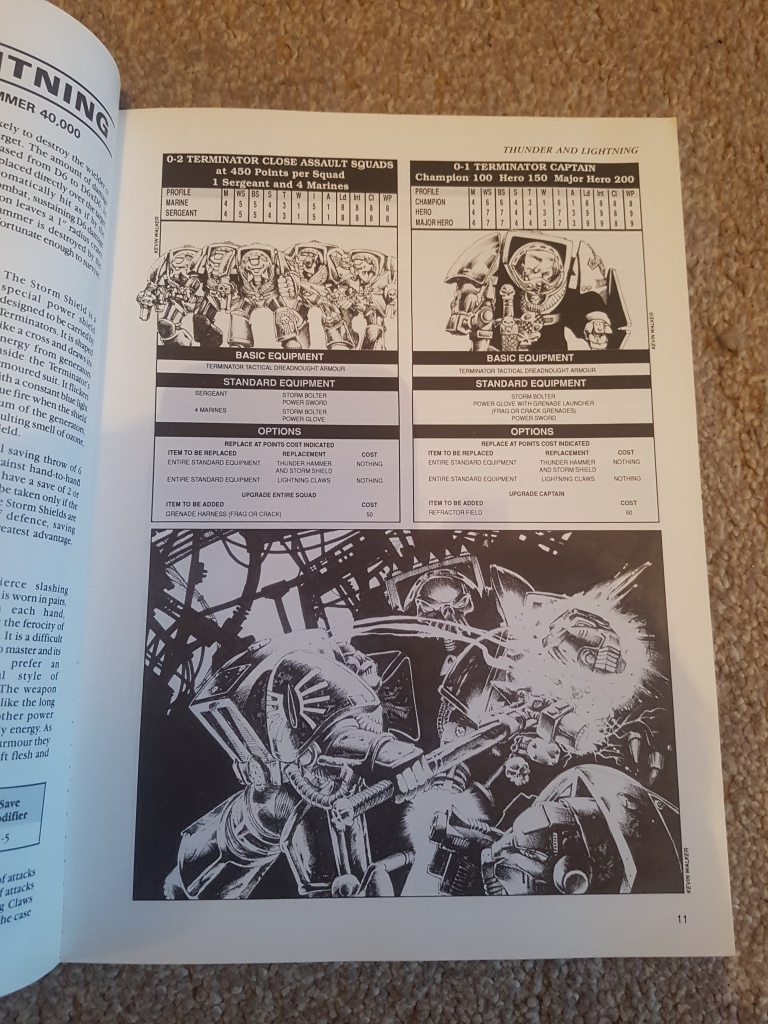
It starts with the Grey Knights. Just a couple of pages and two units – the captain and the terminator squad. The Knights have come a long was since then! There’s more terminator stuff though, with rules for the Cyclone Missile Launcher, Thunder Hammers, Storm Shields and Lightning Claws and a page on ‘Traitor Terminators’.
Things have changed a lot. If the CML model is hit by enemy fire roll 2D6 and if the result is 11 or 12 there’s a catastrophic launch! This could result in the terminator exploding or him spinning around firing off missiles randomly. So you don’t need to wound him, or get through his armour, just pepper him with lasgun shots until he gets 11 or 12 then watch the fireworks!
The Thunder Hammer can be cranked up to full power and instead of D6 damage, it has D6xD6 damage. It’s destroyed and hits the wielder with D6 damage in the process, so it’s a suicide hit, but one with the potential for doing 36 damage!!
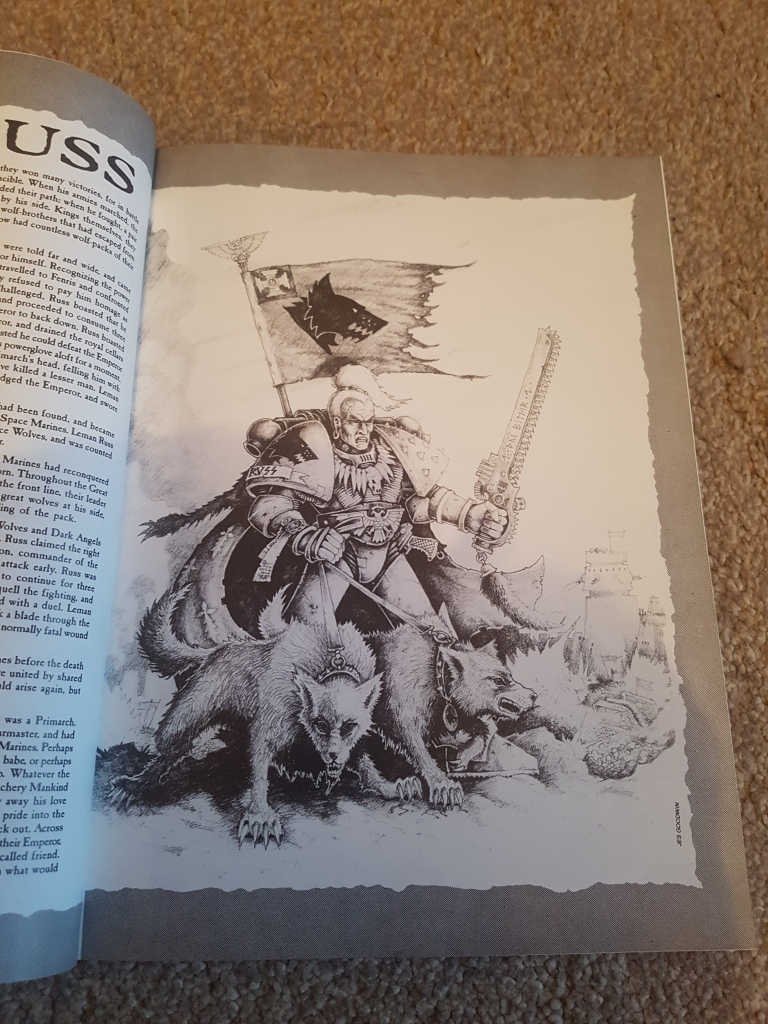
There’s a nice one-page fluff piece on Leman Russ. Probably one of the earliest accounts of the Primarchs, how they were lost and subsequently found, the rivalry between Russ and El’Jonson and a brief mention of the Horus Heresy.
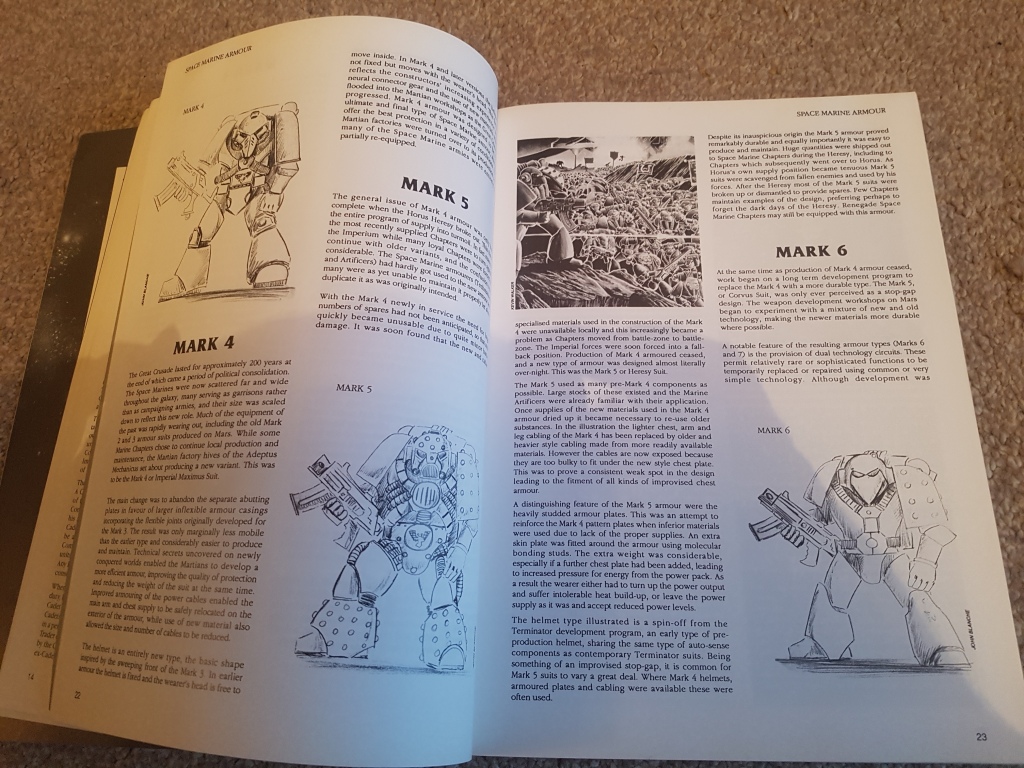
I’m not sure if it’s all still canon (although it’s probably close) but there’s quite a bit of detail on all 7 of the pre-Primaris types of power armour, written by Rick Priestley. This is all accompanied by new rules for marines. One of which is the increase in Toughness from 3 to 4. Can you imagine, marines used to be Toughness 3! (I guess in another 30 years people will be aghast at the idea that marines used to be 1 Wound!) As part of this there’s also the introduction to Overwatch. It’s a long way from what we have now. It’s actually an opportunity to fire during your opponent’s movement phase as they move from cover to cover. I do remember using those rules, maybe in 2nd ed.

I always enjoy looking at old ‘Eavy Metal models in old White Dwarfs and this compilation of White Dwarf articles doesn’t disappoint. These are various Tactical marines painted in the nice bold colours of 1st and 2nd ed. It’s accompanied by fairly detailed notes about chapter and squad insignia. I don’t remember seeing that kind of nerdy detail in recent publications. I don’t think anyone cares what colour the blood drop on the shoulder pad of a 3rd company Blood Angel is anymore!
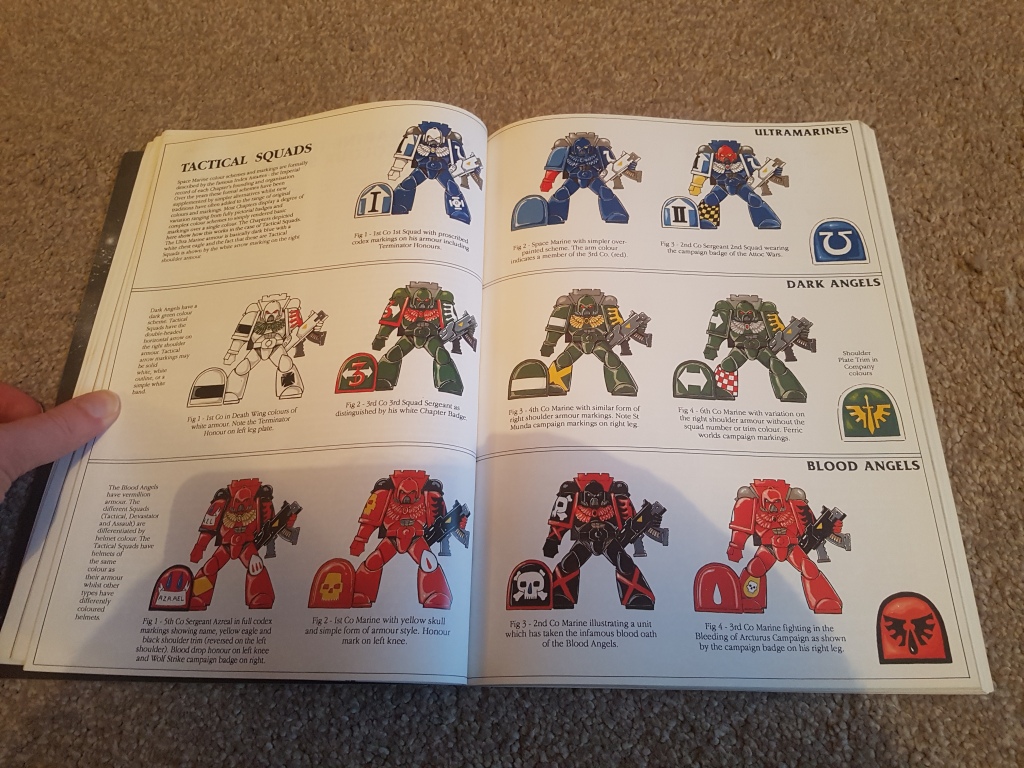
Next up is the Eldar. There’s pages and pages of fluff – before The Fall, their psychic abilities, spirit stones, runes, The Fall, craftworlds etc, etc. I’m not sure, but this might be the first detailed background on the Eldar. At least the first time all together, given these are from various WD articles, I guess.

In fact, this is pretty much a mini-dex (before they started producing codexes). There’s details on the Avatar, Aspect Warriors, Exarchs, there’s some great sketches by Jes Goodwin and then there’s a fairly comprehensive army list. And of course, some more ‘Eavy Metal!

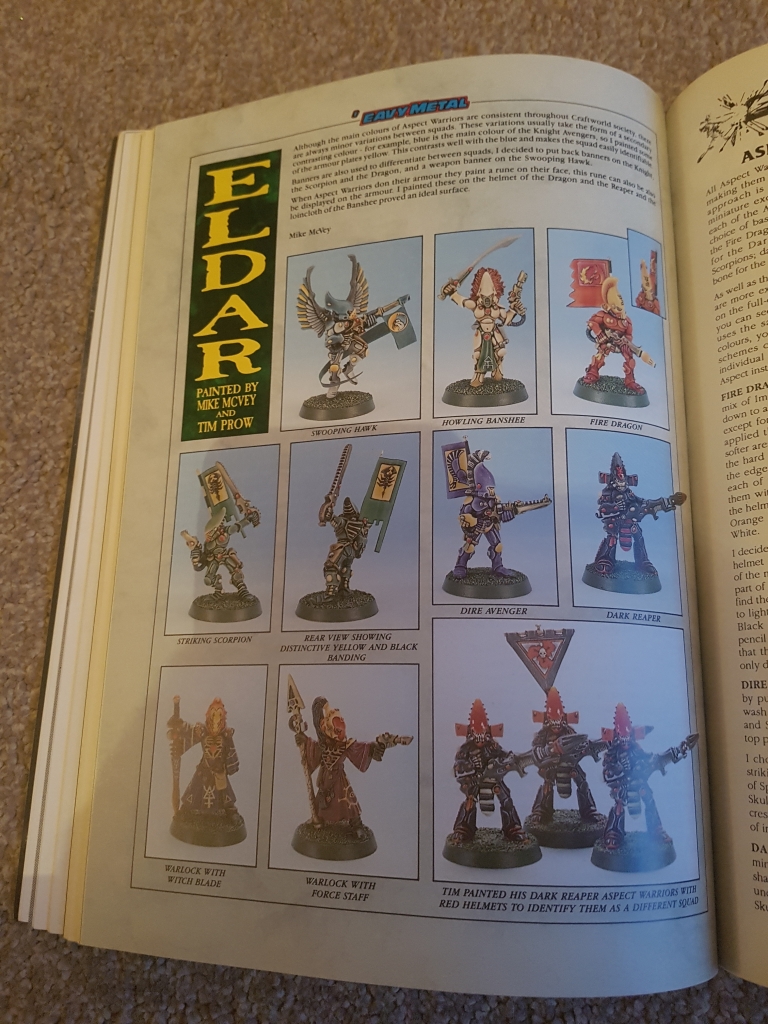
The stats for the Avatar are fun. WS, BS, S, T, W, I and A are all randomly generated. So WS and BS are both D6+4. It says it’s to represent that all the Avatars are different and that you can reuse the same Avatar or generate a new one next game. Lots of opportunity to ‘game the system’ there, but it was a different, more innocent time!

Exarchs can randomly select an Ancient Weapon. Roll a D100 and consult a table and your Howling Banshee Exarch could have a Firepike, or your Striking Scorpion Exarch could have a Web of Skulls. Very odd. A classic Rogue Trader era random table. It really was a part of the 1st ed DNA, but given where the game is now, it’s pretty weird to be just rolling D100 to equip your models. There’s another one for the Exarch powers too. Why would you want your Dark Reaper to have Bounding Leap?!
The final section is all about Genestealers. As with the Eldar, there’s background fluff about the Stealers and cults, as well as the army list (more D100 random tables for weapons and equipment) and various special rules on cults, psychic abilities etc. There’s a surprising amount about cults, physiology, special rules, army organisation and even using beastmen and chaos spawn.

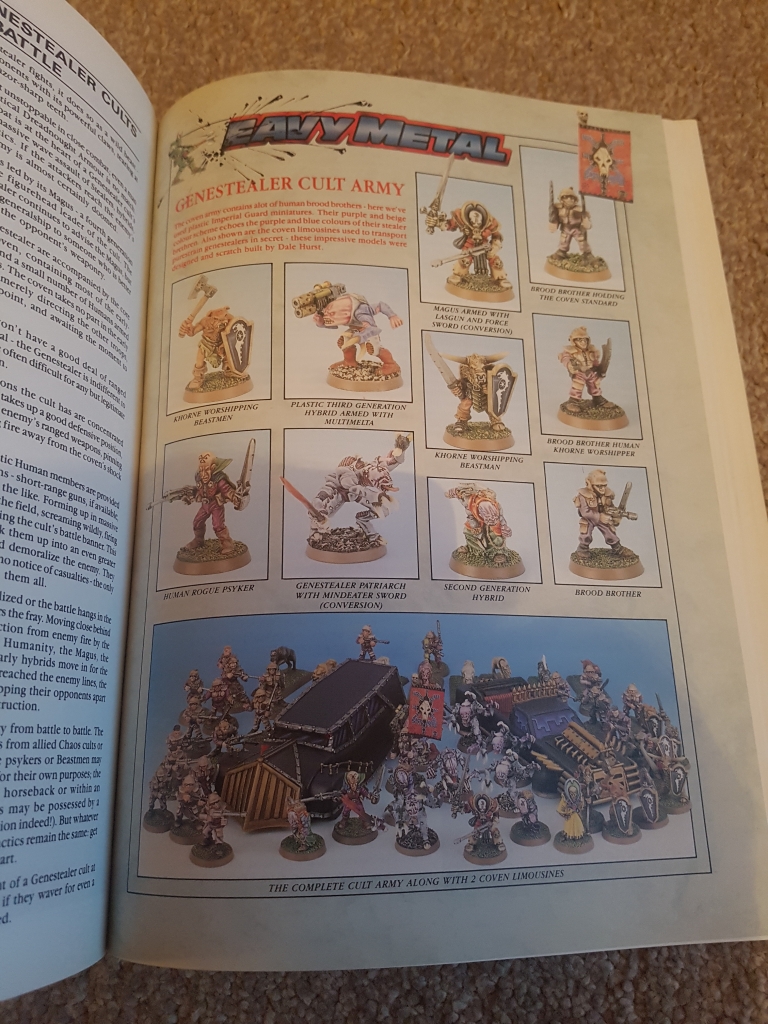
There’s black and white sketches scattered throughout, in the usual 1st ed grimdark style, including a full page one from John Blanche depicting a genestealer cult with a cheeky purestrain in the background. And for a bit more eye candy there’s another Eavy Metal page, including some lovely coven limousines, and an amazing Mike McVey diorama depicting marines and Terminators fighting genestealers – purestrains and hybrids. This was one of the classic pictures of the time for me.
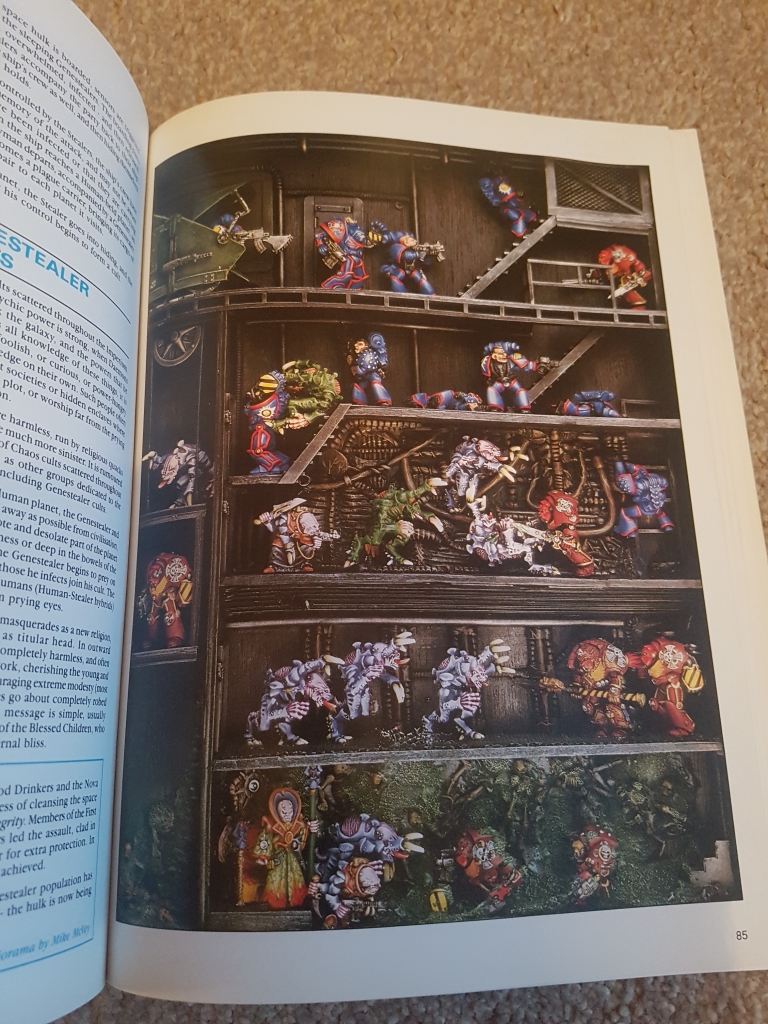
The rules are as unusual as the Eldar ones. As well as the D100 tables for weapon choice, a coven is made up of a patriarch, magus, D6 purestrains and D6 hybrids, so could be anything from 4 to 14 models all for the same points cost! Fancy a bit of chaos? Let your patriarch be possessed. For just 500 points he can be a daemon prince, great unclean one, bloodthirster etc. He can even be a Nurgling!

Then we get to the back pages, and in traditional White Dwarf style of the time (and remember although it feels like a bunch of mini-dexes, it’s really just White Dwarf articles bunched together in one place) it’s the mail order pages. Black and white images of the individual models you can buy. I miss being able to pick up that exact model or sprue that I need. There’s a Leman Russ model (misspelt Leaman!) that’s no bigger than any other marine. Imagine that now!

And that’s it. I don’t think I meant to do a big old review like that, just flicked through and made some notes and that’s what came out the other end. I hope it’s either given you a rose tinted nostalgia trip to the early 90s, reminding you of a simpler time, or an insight into the early days of Warhammer 40k if you weren’t fortunate enough to experience it at the time.
And a final image, the triumvirate of 1st ed Rogue Trader rule books…
